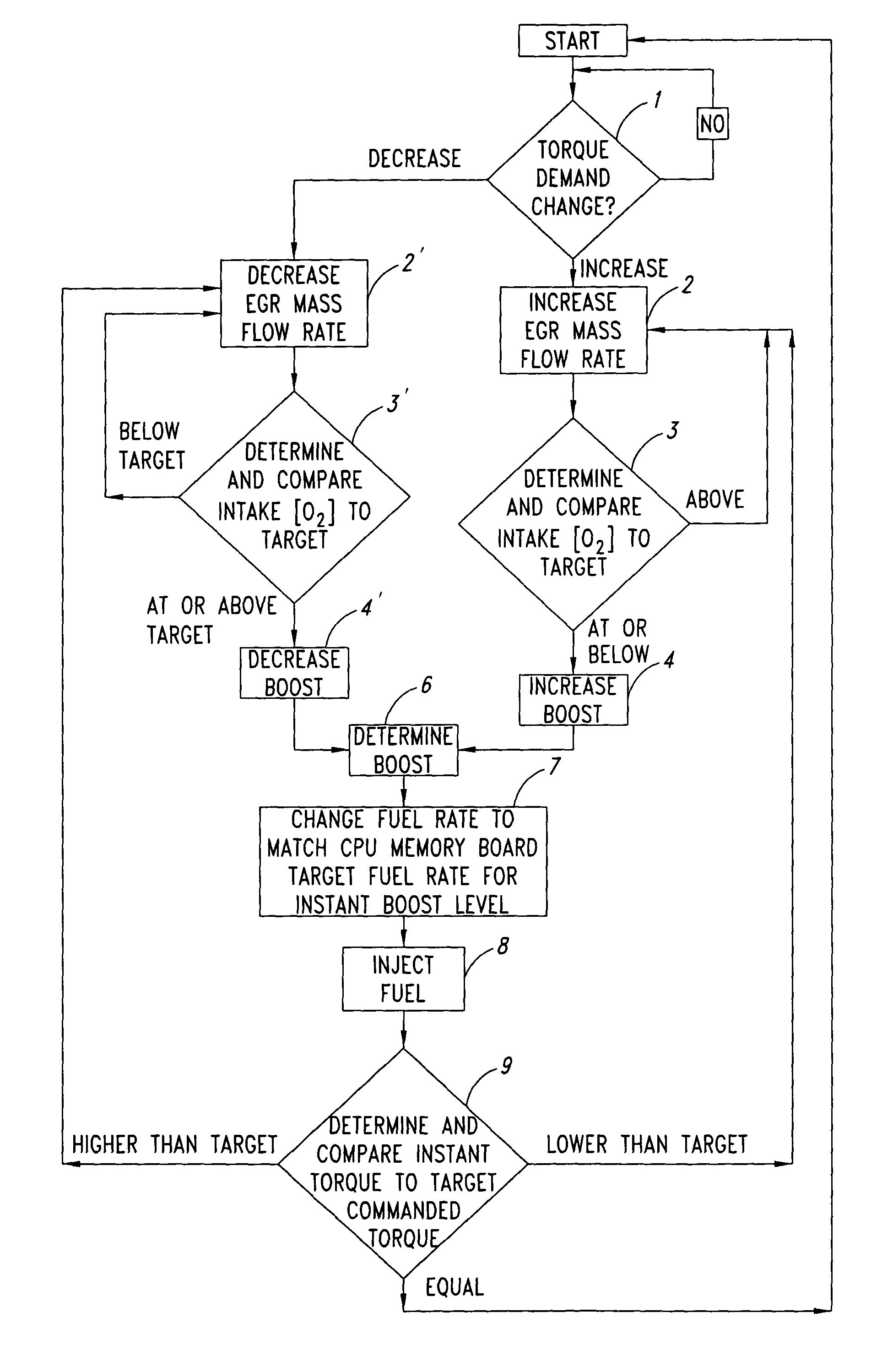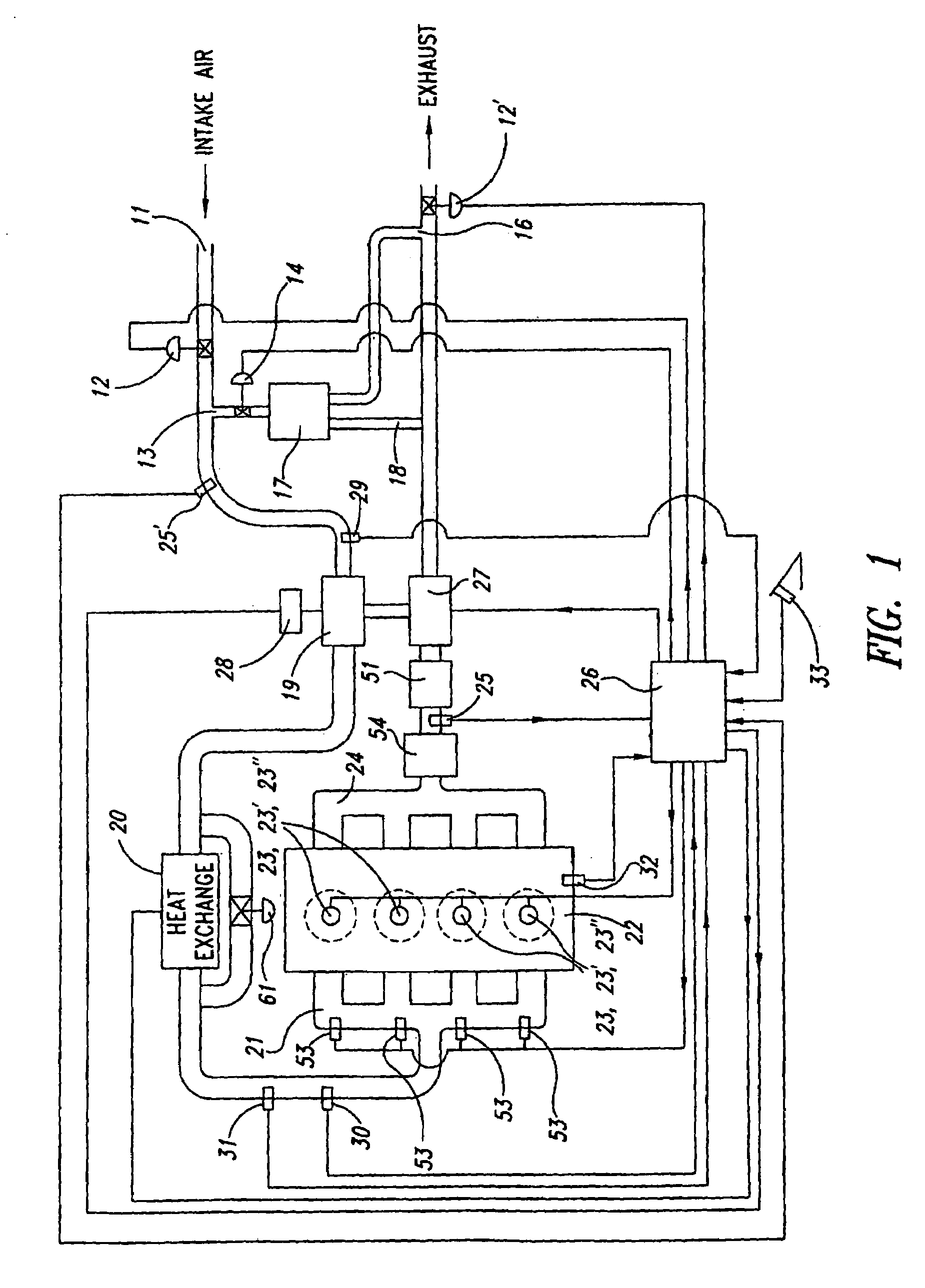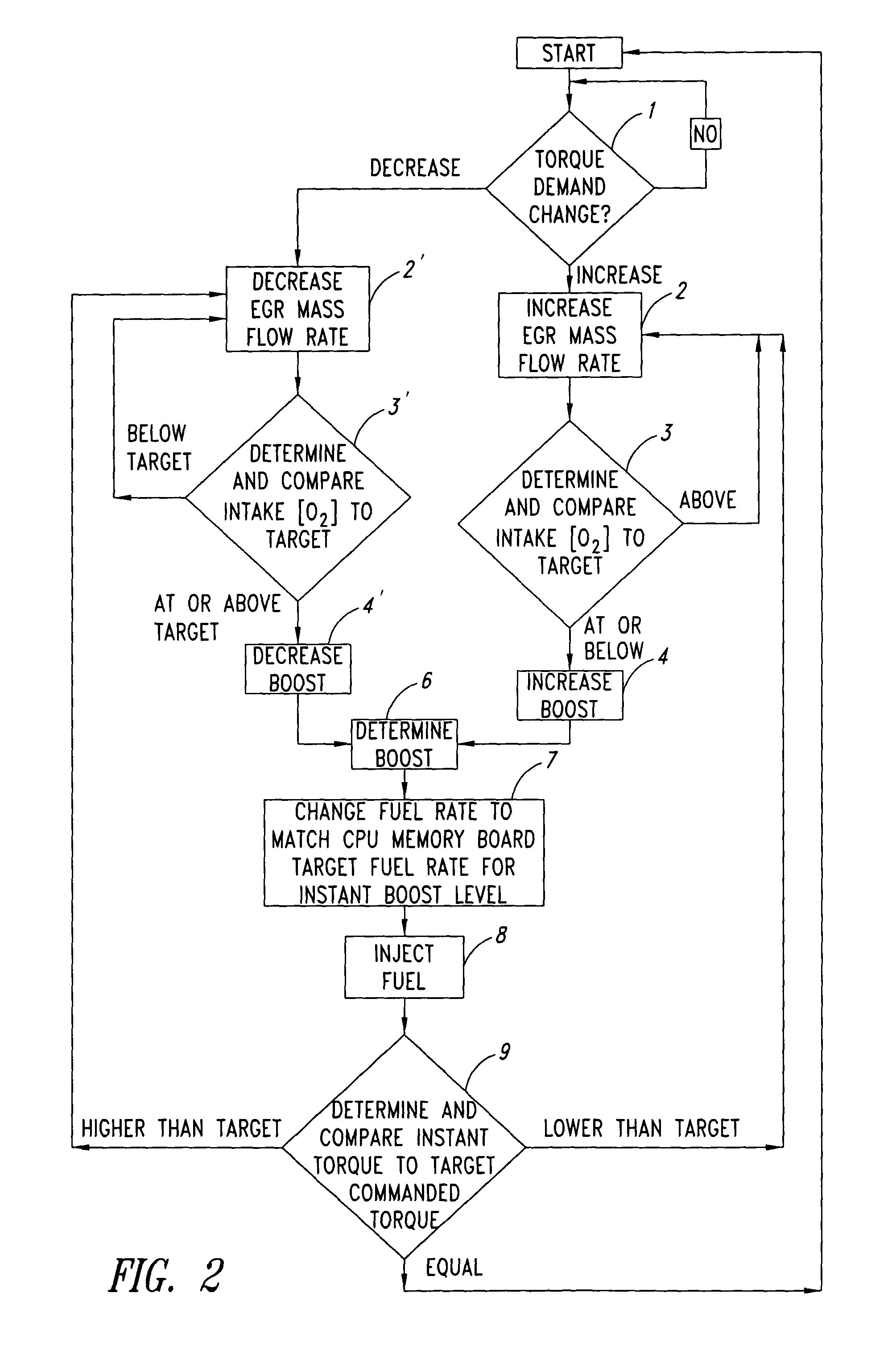Methods for low emission, controlled temperature combustion in engines which utilize late direct cylinder injection of fuel
a technology of direct cylinder injection and combustion process, which is applied in the direction of electric control, machines/engines, instruments, etc., can solve the problem of more difficult to avoid temporary fuel levels in excess of desired fuel/oxygen ratio, and achieve the effect of minimizing harmful emissions, reducing harmful emissions, and increasing pm levels
- Summary
- Abstract
- Description
- Claims
- Application Information
AI Technical Summary
Benefits of technology
Problems solved by technology
Method used
Image
Examples
Embodiment Construction
The Importance of Boost Control for Controlled Temperature Combustion
[0019]As discussed in the parent application hereto (U.S. patent application Ser. No. 10 / 214,229), for a given quantity of fuel to be burned, assuming adiabatic combustion, the final combustion temperature, T3, is in the form of T3=T2+Hc / Cv (where T2 is the final compression temperature, Hc=heat released from combustion of the fuel, and Cv is the total heat capacity of the charge-air fuel mixture, i.e., the mass of the mixture times the specific heat capacity). A goal to minimize NOx formation is to lower and control T3 (to 2000° Kelvin, for example). Since for a given quantity of fuel burned, Hc is fixed, the only variable to control T3 is Cv. If Cv is large, T3 will be lower.
[0020]Given the foregoing, one known strategy for lowering and controlling peak combustion temperatures is by adjusting the heat capacity of the charge-air fuel mixture. However, given the above equations, for T3 to be controlled to a stable ...
PUM
 Login to View More
Login to View More Abstract
Description
Claims
Application Information
 Login to View More
Login to View More - R&D
- Intellectual Property
- Life Sciences
- Materials
- Tech Scout
- Unparalleled Data Quality
- Higher Quality Content
- 60% Fewer Hallucinations
Browse by: Latest US Patents, China's latest patents, Technical Efficacy Thesaurus, Application Domain, Technology Topic, Popular Technical Reports.
© 2025 PatSnap. All rights reserved.Legal|Privacy policy|Modern Slavery Act Transparency Statement|Sitemap|About US| Contact US: help@patsnap.com



